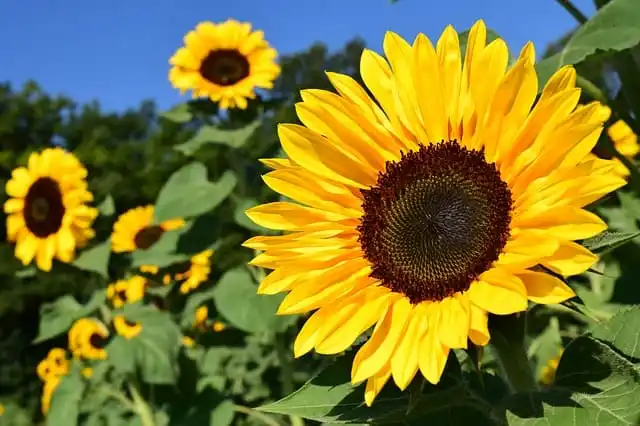Gladiolus, often referred to as “sword lilies,” are prized for their stunning, tall flower spikes and vibrant colors. Cultivating these elegant flowers requires specific care and attention. In this expert guide, we’ll provide comprehensive instructions on how to grow Gladiolus flowers successfully, referencing information from reputable government bodies, horticultural organizations, and academic experts.
Introduction to Gladiolus
Gladiolus are cormous perennials that produce tall spikes of colorful, orchid-like blossoms. Understanding their unique characteristics and growth requirements is essential for successful cultivation.
Selecting the Right Gladiolus Varieties
Consult local horticultural experts or the United States Department of Agriculture (USDA) plant hardiness zone map to determine the Gladiolus varieties suitable for your region. Choose from various colors and sizes to suit your preferences.
Preparing the Planting Site
Gladiolus thrive in well-drained soil and full sunlight. Prepare the planting site by amending the soil with organic matter to improve fertility. Ensure the soil has good drainage to prevent corms from rotting.
Planting Gladiolus
Follow these steps when planting Gladiolus:
Timing
Plant Gladiolus corms in early spring after the last frost date or in late fall to overwinter. This allows them to establish roots before blooming.
Spacing
Space corms 6 to 8 inches apart, and plant them about 4 to 6 inches deep with the pointed end facing up.
Watering
Water the corms after planting and keep the soil consistently moist during the growing season.
Proper Care and Maintenance
To ensure healthy Gladiolus growth:
Fertilization
Use a balanced, water-soluble fertilizer or a specialized bulb fertilizer during the growing season. Follow recommendations from the Agricultural Cooperative Extension for your region.
Staking
Tall Gladiolus varieties may require staking to support their flower spikes and prevent bending or breakage.
Pest and Disease Management
While Gladiolus are relatively pest-resistant, they can be affected by aphids and thrips. Consult resources from the National Plant Board and the American Horticultural Society for guidance on managing potential issues.
Harvesting Gladiolus
Harvest Gladiolus flowers when the lower three to four buds on the spike have opened and the top bud is showing color. Cut the stem at an angle and place it in a vase with fresh water to enjoy their beauty indoors.
Resources for Further Information
For comprehensive knowledge and expert advice on growing Gladiolus, explore resources from horticultural experts and institutions, including:
United States Department of Agriculture (USDA)
www.usda.gov
Agricultural Cooperative Extension
Contact your local extension office for personalized guidance and resources.
What are Gladiolus flowers, and what makes them popular for cultivation?
Gladiolus are tall, elegant flowering plants known for their striking spikes of colorful blossoms. They are popular for their vibrant and diverse range of colors.
How do I choose the right Gladiolus varieties for my region and preferences?
Consult local horticultural experts or the USDA plant hardiness zone map to select Gladiolus varieties suitable for your area. Varieties come in various colors and sizes.
What are the ideal sunlight and soil conditions for Gladiolus cultivation?
Gladiolus thrive in full sun and well-drained soil. Soil should be rich in organic matter, and proper drainage is crucial to prevent corm rot.
When is the best time to plant Gladiolus corms?
Gladiolus corms can be planted in early spring after the last frost date or in late fall to overwinter, allowing them to establish roots before flowering.
How deep and how far apart should Gladiolus corms be planted?
Plant corms 4 to 6 inches deep with the pointed end facing up, spaced 6 to 8 inches apart.
What is the recommended watering and fertilization schedule for Gladiolus?
Keep the soil consistently moist during the growing season and apply a balanced, water-soluble or specialized bulb fertilizer, following local recommendations.
Do Gladiolus varieties differ in height, and should they be staked for support?
Yes, Gladiolus varieties come in different heights. Taller varieties may require staking to support their flower spikes and prevent bending or breakage.
What are common pests and diseases that affect Gladiolus, and how can I manage them?
Gladiolus are relatively pest-resistant but can be affected by aphids and thrips. Consult resources from the National Plant Board and the American Horticultural Society for management tips.
When is the best time to harvest Gladiolus flowers for indoor arrangements?
Harvest Gladiolus flowers when the lower three to four buds on the spike have opened and the top bud is showing color. Cut the stem at an angle and place it in fresh water for indoor enjoyment.
Where can I find more information and expert resources on growing Gladiolus?
Explore resources from the USDA and consult your local Agricultural Cooperative Extension for personalized guidance and horticultural expertise on cultivating Gladiolus flowers.
- How to Prevent and Reduce Knee and Back Pain While Gardening - July 19, 2024
- Garden Myth: Compost tumblers make compost in two weeks - July 17, 2024
- How do you clean and care for garden tools? - July 16, 2024




